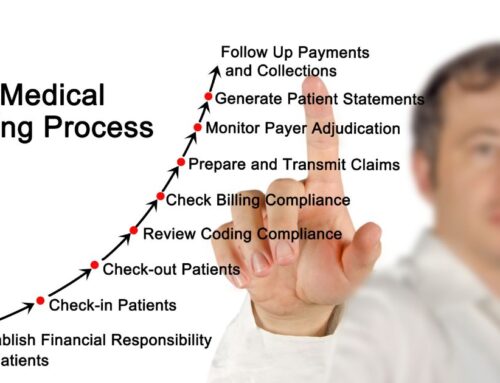Laboratory legislation has been a topic of discussion as of late. PAMA, or the Protecting Access to Medicare Act was enacted in 2014, with the primary aim of reforming the Medicare payment system for clinical diagnostic laboratory services. In June of 2022, new legislation, known as the Saving Access To Laboratory Service Act (SALSA) was introduced to Congress that offered a permanent solution that would set Medicare reimbursement for clinical laboratory services on a sustainable path forward. In this blog, we will discuss these laboratory legislation reforms and how your laboratory can support SALSA.
What is PAMA?
PAMA is a significant piece of legislation in the United States healthcare system. This comprehensive act introduced several changes to ensure appropriate reimbursement rates, encourage high-quality services, and promote transparency in Medicare payments. One of the main objectives of the PAMA Act was to replace the previous fee schedule system for Medicare laboratory payments, which was widely criticized for being outdated and inadequate. Under the fee schedule system, Medicare reimbursement rates for laboratory tests were based on historical data, often leading to inflated payments. The PAMA Act introduced a new system called Clinical Laboratory Fee Schedule (CLFS), which aimed to establish more accurate and current payment rates.
The CLFS introduced a market-based approach to determine payment rates for lab services. It required laboratories to report private payer rates and volumes for specified tests. These reported rates were then used to calculate Medicare payment rates. By relying on data from private payers, the PAMA Act sought to align Medicare payments with the actual costs of providing lab services. This data is made publicly available, allowing stakeholders to access the reasonableness of payment rates and identify potential discrepancies—increased transparency aimed to foster accountability and reduce fraud and abuse within the Medicare system.
However, there were flaws to this act, as the methodology for determining future payment rates was based on an inaccurate sample for collecting data. There were a large number of hospital outreach labs that were excluded from the pricing data that severely under-reported the industry average pricing. The data sets used for PAMA were skewed toward nation labs, which have extremely low compensation rates. Now, laboratories are throwing their support behind legislation reform such as SALSA.
What is SALSA?
With the flaws that came with PAMA, the Saving Access to Laboratory Services Act has been proposed as a response to the harmful impact drastic rate cuts would cause to the healthcare industry and our communities if PAMA goes unchecked. SALSA proposes major reforms that can correct the path of declining Medicare market rates and improve the representation of the beneficiaries and laboratories that PAMA has failed to support.
Below are the changes that SALSA aims to implement
- Redefining “applicable information”
-
-
- Currently, the Centers for Medicare and Medicaid Services (CMS) definition of “applicable information” includes Medicaid managed care rates and physically mailed remittances. Medicaid-managed care rates are not true market rates and will be excluded from the definition. Physically mailed remittances that do not exceed more than 10% of the laboratory claims will also be excluded from this definition.
-
- Updating data collection periods
-
-
- SALSA intends to increase the length of time between data collection periods from 3 to 4 years in order to provide relief from reporting work for labs across the country. The first reporting period will be in 2026 and will be based on 2025 data.
-
- Widely Available Test
-
-
- SALSA would require reporting on widely available lab tests which are defined as tests with reimbursement rates on the CLFS less than $1000 and offered by more than 1000 laboratories.
-
- Limits placed on rate cuts and increases
-
-
- With a 15% increase on CLFS rates set for 2024 to 2025, SALSA would be placing an annual limit of 5% on how much a CFLS rate would be able to increase or decrease. This would help in applying stability to rate fluctuations for labs and Medicare beneficiaries. The reduction percentage is currently capped at 15% but is set to expire in 2026.
-
- Inclusivity in reporting and price sampling
-
- Under this new legislation, CMS would be required to collect additional statistically representative data on private payer rates from more segments of clinical laboratories. The maximal brewer selection method will be used to establish a statistically valid sample. This would be helpful in providing a more realistic sample representation for pricing while reducing the reporting burden as it requires fewer laboratories to report.
What Does This Mean for My Lab?
For many labs, facing additional cuts of as much as 15% to some of the most commonly ordered clinical laboratory tests can be detrimental. Organizations across the country have urged Congress to enact SALSA this year in order to ensure that these cuts do not occur. There is hope that SALSA can be passed as a part of the larger end-of-year Medicare spending package, making it critical for lobbying efforts to happen now.
The American Clinical Laboratory Association (ACLA) and the National Independent Laboratory (NILA) have both extended their support over the SALSA legislation as a reform of the PAMA legislation. While waiting for news on this legislation and its enactment, it is imperative that laboratories strategize with their revenue cycle management teams on how to improve their billing and collection processes during annual payment reductions from both government and private payers.
Luckily, that is where Credence Global Solutions has your back. Our team of dedicated experts can guide you through all the trials and tribulations of RCM for your healthcare facility. Whether it is handling your Accounts Receivable and denials or managing your coding and charge entry, we are here each step of the way. New legislation can be tricky and confusing. Let us take the back-end work off of your plate so you can get back to focusing on what really matters- your patients. Looking for more information? Check out our website or contact us today!





